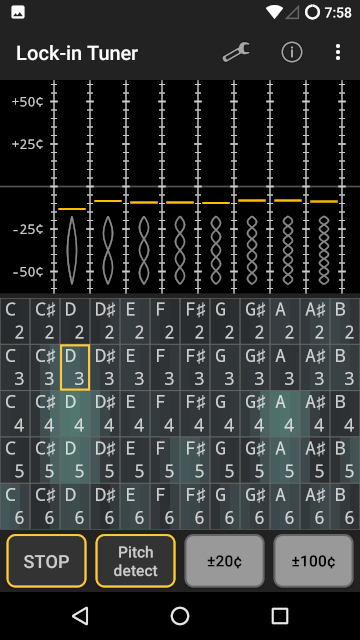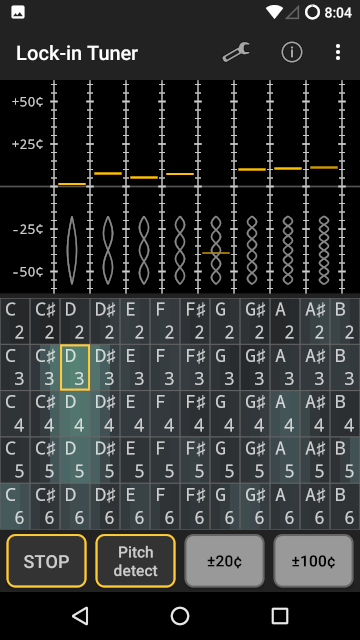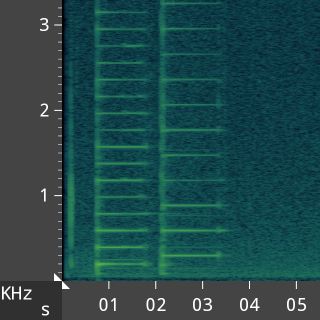Lock-in TunerThis application uses independent phase-locked loops (PLL) to track up to 16 harmonics of the string. A band-pass filter at the input of each loop has bandwith ±1 semitone (1/12 of octave).
The screenshots above were taken on a Galaxy Nexus released in 2012, running LineageOS 13.0 (Android API 23). The plucked string theory
The sound of a vibrating string is not a simple tone (sine wave). It is a complex tone composed of many simple tones, or partials, with frequencies close to integer multiples of the fundamental. But they are not exact multiples due to inharmonicity of real strings [1]. This is why one needle is not enough to visualize the signal of a vibrating string. For harmonic tuning, we need to track higher harmonics of low strings instead of the fundamental [3]. The following picture shows spectrum of 2 notes that make a perfect fifth (7 semitones apart), G3 and D4.
Notice that third harmonic of one string matches second harmonic of the other. They are close enough to be perceived as one tone, but the difference in frequency can produce beats or roughness, making the chord sound dissonant [2]. \[ f_n = n f_0 \sqrt{1 + B n^2}, \label{partials} \tag{1} \]where Β is the inharmonicity coefficient. This effect gets more pronounced in higher partials:
Compare this indication with partials computed by (\ref{partials}) for Β = 0.0001 : Remember that you should always end with tightening the string rather than loosening it. [4] References
1. Young, R. Inharmonicity of plain wire piano strings.
2. Roederer, J.G. The Physics and Psychophysics of Music - An Introduction 3. Strings, standing waves and harmonics - The University of New South Wales 4. When tuning a guitar... - StackExchange Music. Privacy PolicyAudio signal captured and processed by this application is used for display indication only. It is neither saved to storage media nor transmitted over network. The application does not make any network connections. The author is not responsible for data collection by Google services, the device vendor's software, or third party applications. |




